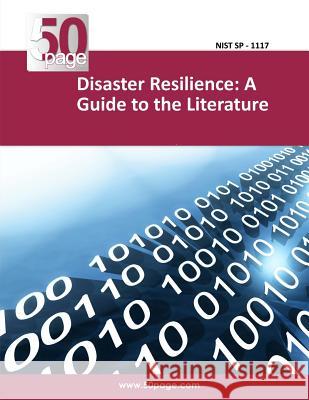Disaster Resilience: A Guide to the Literature » książka
Disaster Resilience: A Guide to the Literature
ISBN-13: 9781494738426 / Angielski / Miękka / 2013 / 128 str.
Although there is a great deal of high-quality information available on resilience-related topics hazard assessment, vulnerability assessment, risk assessment, risk management, and loss estimation as well as disaster resilience itself, there is no central source of data and tools to which the owners and managers of constructed facilities, community planners, policy makers, and other decision makers can turn for help in defining and measuring the resilience of their structures and communities. The purpose of this document is to provide a survey of the literature and an annotated bibliography of printed and electronic resources that serves as that central source of data and tools to help readers develop methodologies for defining and measuring the disaster resilience of their structures and communities. The report covers resilience-related topics at two different levels: (1) individual constructed facilities and correlated collections of constructed facilities that form a network (e.g., hospitals) and (2) community/regional scale frameworks (e.g., physical infrastructure, business and economic relationships, population and employment demographics). Thus, the first level focuses on physical infrastructure, whereas the second takes a broader look at how the physical infrastructure interacts with other activities that collectively define modern communities. The reason for taking this approach is to establish a foundation for developing methodologies for defining and measuring the disaster resilience of structures. This step is especially important because physical infrastructure enables the community to function as a place of employment, a window to the regional and national economy, and a home for individuals. Developing better metrics and tools for defining and measuring the resilience of structures is an important step in meeting the challenge of measuring disaster resilience at the community scale.
Zawartość książki może nie spełniać oczekiwań – reklamacje nie obejmują treści, która mogła nie być redakcyjnie ani merytorycznie opracowana.











